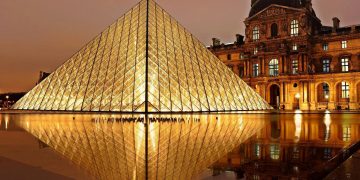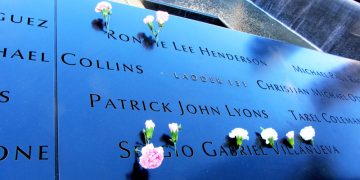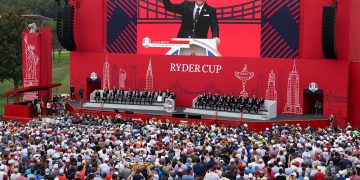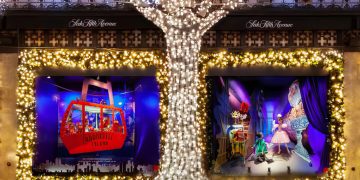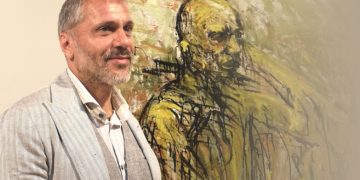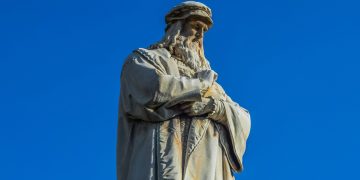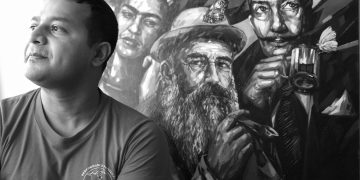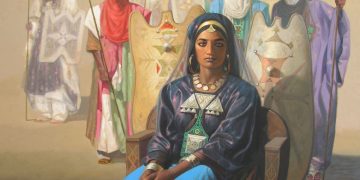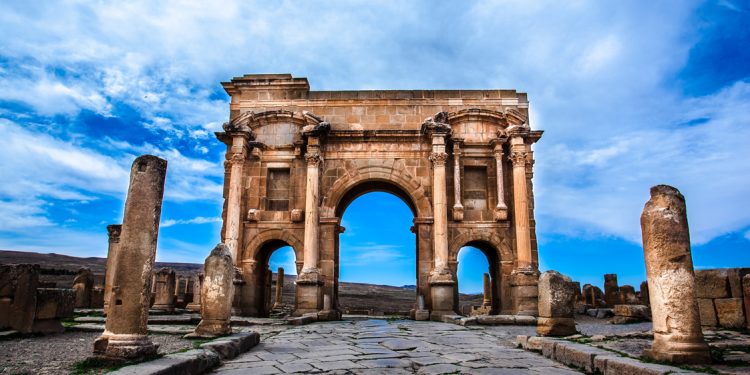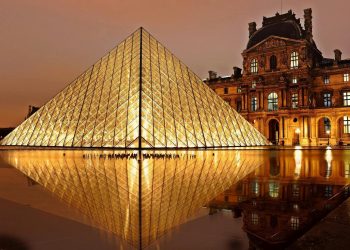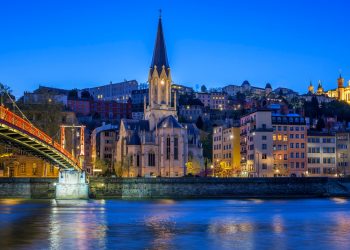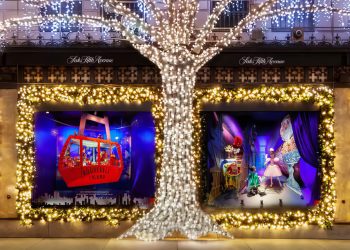Located on a mountainous site of great beauty, north of the Aures massif, 418 km from Algiers, and 36 km from the city of Batna, Timgad was, in Roman times, a military colony. It was created in the year 100 AD by the last Roman Emperor “Trajan”, who gave it the name of his sister “Marciana Traiana Thamugadi”.
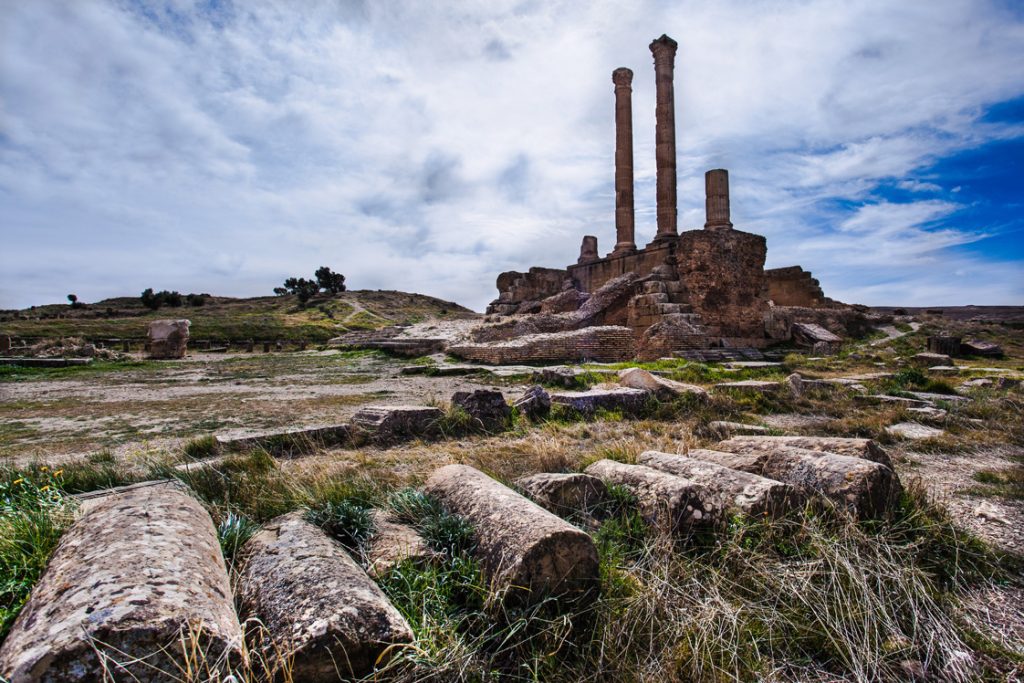
James Bruce, the first to discover the ancient city of Timgad in Batna
Although the Scottish explorer, James Bruce was the first to discover Roman ruins at Timgad in 1765, it was not until 1881 that archaeological excavations carried out by the team of the French architect “Duthoit” revealed many monuments of the city, buried under the sand.
The continuation of their excavations until 1888 resulted in the restoration of the theater and the triumphal arch, as well as the discovery of a large number of Latin engravings.
Other research work supervised by several internationally renowned archaeologists, such as BALLU, LA FERRIERE, COGNAT, and RENIER led to the discovery of the Temple du Capitole and the “SERTIUS” market, between 1893 and 1897.
From 1901 to 1962, such basilicas and a large number of dwellings were discovered, as was the discovery of several thermal baths like the “Philadelphia Baths”, which were found extramural.
During the same period, there have been many findings such as the public library, several tombs, the Christian complex west of the Capitoline Temple, mosaics, and water supply channels.
Without forgetting the capitol and the theater, which represent two buildings of great importance in Timgad.
It is also worth mentioning the excavations which began in 1938 in the Byzantine castle by the French archaeologist “LESCHI” who was the director of antiquities at the time in Algeria. the governor “GODET” also revealed in 1942 the thermal baths which are inside this castle, the excavations continued during the years 1954 and 1955 under the guardianship of “LE GLAY” and “LASSUS” until 1959, these excavations made it possible to reveal the whole castle, as well as the traces of the great temple “AQUA SEPTIMIANA FLEX”.
From 1962 to present, all archaeological excavations in the city of Timgad have been suspended and most of the work on the site has been limited to cleaning and maintenance of certain monuments.
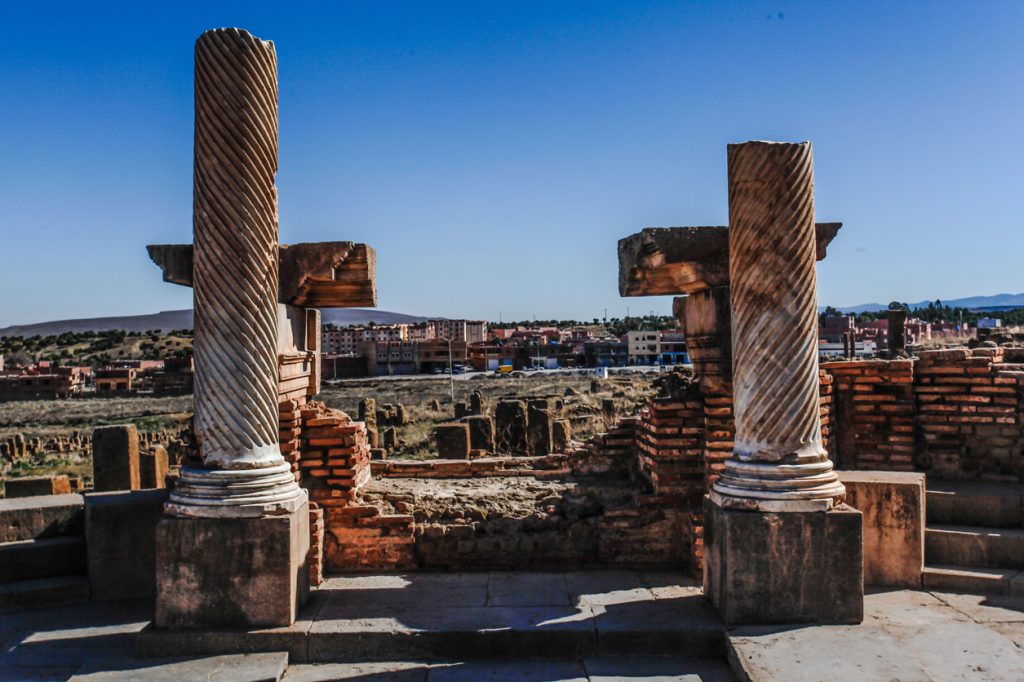
The forum … the political and social heart of Timgad
Located in the heart of the quadrangle of the original city of Timgad, the Forum (public square) was considered one of the most important places in Roman times.
Delimited by four porticoes, the “forum” was an enclosed rectangular space that hosted many activities. It formed the political and social heart of the city, it housed the curia where the regional order gathered as well as a civil basilica and a single temple, raised on a podium, which would have been dedicated to the Victory. The curia was a room of rather small size, preceded by a portico decorated with statues and covered with marble.The basilica faced it, occupying the eastern facade of the forum, An apse to the north gave an axiality to this vast room which welcomed judicial activities, a tribune occupied one of the small sides and allowed judges to sit.
It formed the political and social heart of the city, it housed the curia where the regional order gathered as well as a civil basilica and a single temple.
The forum was decorated with at least thirty statues, the bases of which have been found bearing inscriptions, its construction was financed by the city and probably began shortly after the founding of the city.
It is worth mentioning that one found on one of the columns of the forum an inscription which summarized the way of life of the Romans “hunting, swimming, playing, spectating etc …”.


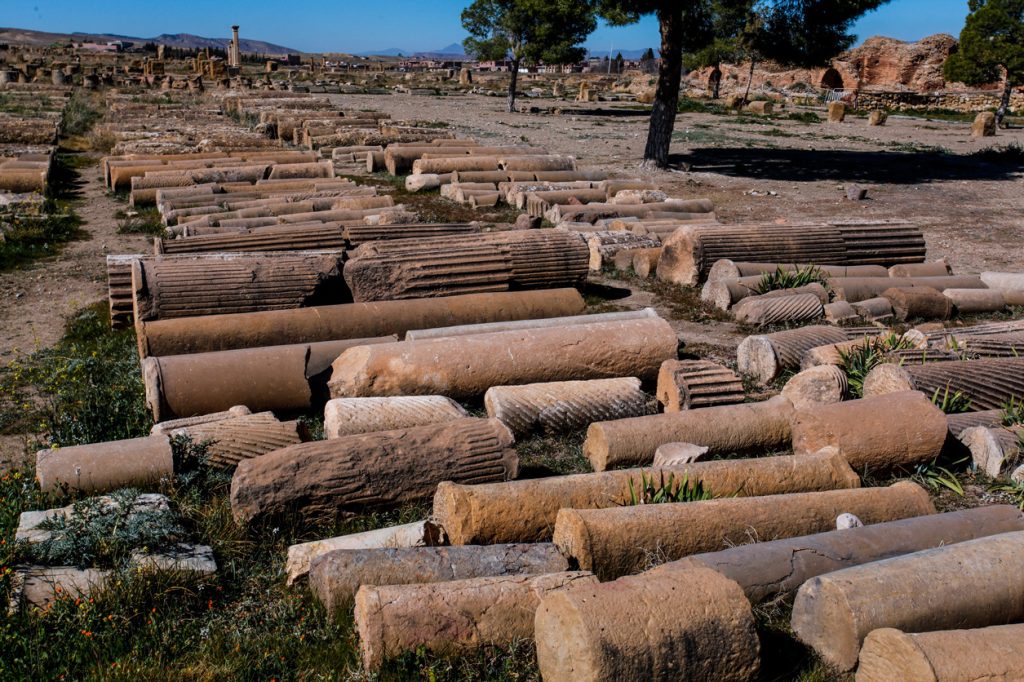

The thermal baths of Timgad… important meeting places for the Romans
It goes without saying that baths have always been of paramount importance to the Romans, first in health, then in social terms. They had become real meeting places where rhetoricians and philosophers came to speak.
It should be noted that Timgad has no less than thirteen establishments intended for the public, without counting the private baths installed in all the houses with the wealthy owners.
We find in each of the thermal baths of Timgad a succession of rooms, each time arranged differently but with this invariable rule that the bather, always started with the cold bath, could reach the lukewarm room, then the caldarium, finally in the oven and iron by the warm room, the tepidarium and the cold room, it was then that he was being scratched with the strigil and anointed with perfumes by a special slave.
Economic growth is the ancient city, the market whose eastern flank is pierced with a door adorned with two columns. It is the only door that gives access to the market, this large open space surrounded by galleries and paved with beautiful blue limestone with a fountain in the center of the courtyard.
The east and west sides of this courtyard are bordered by porticoes formerly supported by columns, most of which have disappeared, the south side is lined with columns established above a high ground of two steps having the semicircular shape at the Inside this hemicycle, seven radiating huts represent to the viewer as many stone tables on which the ancient merchants displayed their food.
(On the columns of the south face of the pedestals contain inscriptions which attest that the monument was erected at the expense of Marcus Plotius Faustus Sertius, Roman knight and former leader of the cohorts and wings of the auxiliary army).
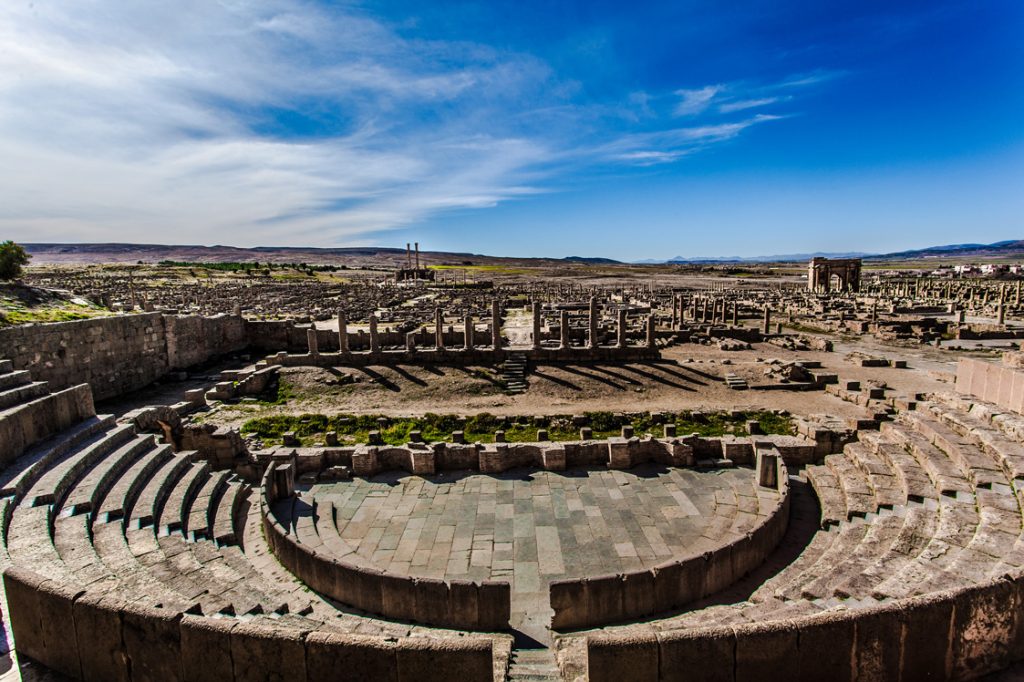
The Roman theater … Platform for artists to unleash their talents.
Located south of the forum, on the side of a hill, the theater is the main performance building in Timgad, with a cavea 63 meters in diameter, it could accommodate around 3,500 people.
The base of a statue of Mercury raised for the salvation of the emperors Septimius Severus and Caracalla celebrated the scenic games given by Lucius Germeus Silvanus for the honor of his omen functions, in Timgad as elsewhere municipal life was inseparable from the festivals and shows.
Created in 168 AD during the reign of Emperor “Marcos-Aurelius”, Roman theater, like the Greek theater, has a religious origin, since it was created in honor of the Greek god “Bacchus”, the God of grapes and wine.
As for the composition of the theater, this included a platform, and an “orchestra” choir. The enclosure of the theater was divided into two parts, the upper one, reserved for the bourgeois class and the notables of the city. , and the other lower dedicated to the public and the rest of the people so that there is no mixing of classes.
The stage platform was intended for the actors, who presented strange stories, novels of a legendary nature and short and humorous plays, the theater was also a place of fun in which the poets recited their poems and the singers performed their songs.
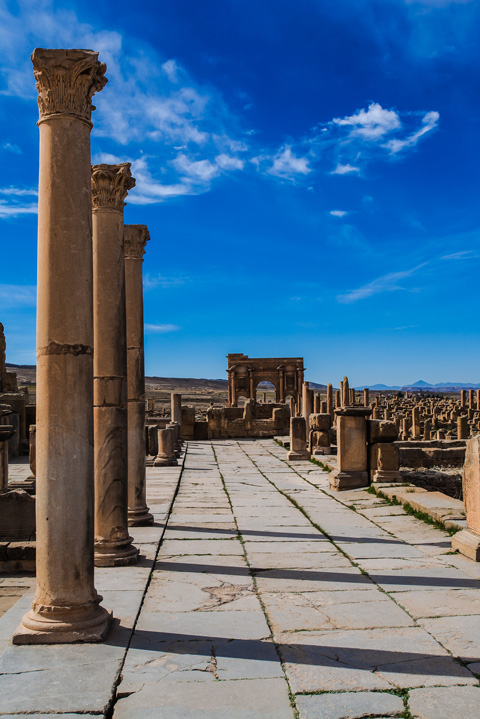
Roman culture, one of the cultures rooted in human history
The Timgad Library … cultural heritage reflecting the Roman passion for culture, science and knowledge.
The excavations of Timgad revealed a relatively unusual building, which was not identified until 1906 as a public library, thanks to the discovery of a Latin inscription, which specified that in the 3rd century Senator Marcus Iulius Quintianus Flavius Rogatianus had bequeathed by will 400,000 sesterces to the city for the construction of a library.
The city built the library in the heart of the city, a sign of its importance in urban culture and honored the generous donor with an honorary statue.
The library was organized around a portico with three sides opening widely onto the street. A large semicircular apse room was fitted out with niches intended to accommodate the works. On either side six adjoining rooms overlooked the portico. According to estimates, the library could accommodate between 16,000 and 28,000 volumes. These figures, however, remain estimates.

Thousands of gods and a deep religious life
The Temple of the Capitol in Timgad… irrefutable proof of Roman religious life
The Romans devoted great veneration to their divinities and in particular to Jupiter, the king of the gods, the latter made considerable pecuniary sacrifices to build shrines to which they gave the most imposing proportions. It was therefore natural that the temple of Jupiter should be the highest of the religious buildings.
According to Etruscan religion, a city was not really founded until the three deities Jupiter, Juno, and neck brace, a temple was dedicated, which was also to be built on a height. The Roman colonies had the right like Rome to own their capitols, by virtue of this right Africa had its own capitols in Carthage, Cirta, Thamugadi, Lambese, or even Cillium.
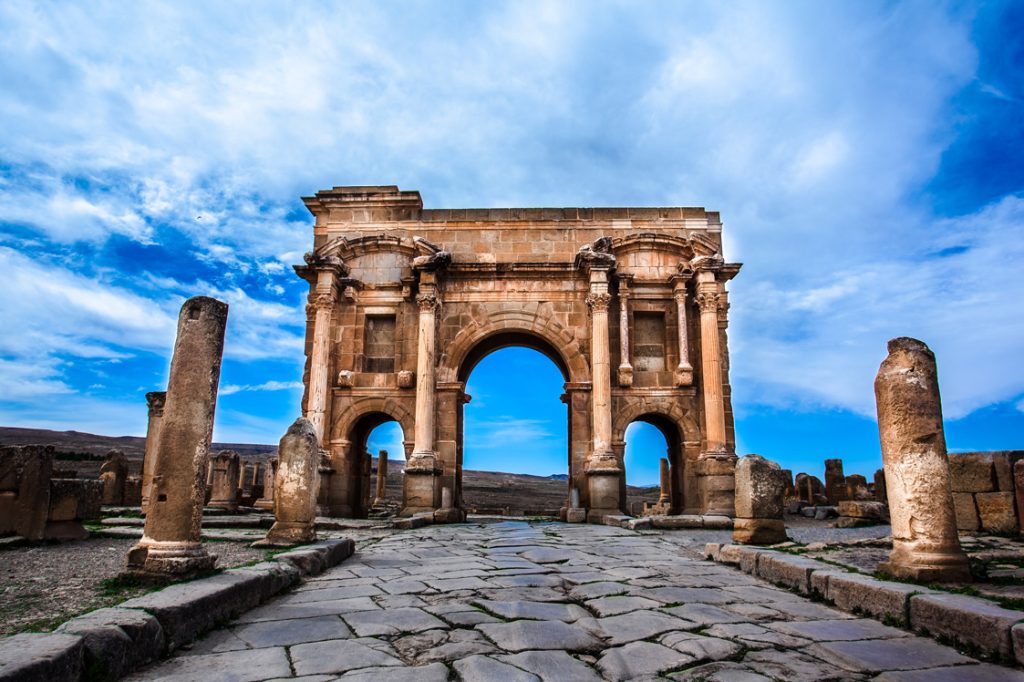
Arch of Trajan … a purely triumphal building during the times of Roman prosperity
It is the best-preserved monument in Thamugadi, thanks to the scholars attention Timgad, emerged from the earth in a quite apparent way.
The majestic building was pierced with three arcades, the largest of which was in the middle, giving passage to tanks, the other two, smaller to pedestrians, above the latter rectangular niches decorated with protruding columns supported on consoles that still exist. , contained white marble statues.
(Circular pediments surmount the niches and rest on two fluted Corinthian columns with rudentures resting on sandstone pedestals, each face of the triumphal arch was therefore decorated with four beautiful columns, above the central base was engraved the dedication in Trajan, a group of figures with quadriga was to crown the top of the attic in accordance with ancient usage.
Sertius’ house … one of the most luxurious homes in Timgad
The house of Sertius was built on the route of the wall, Rectangular in shape, measuring 62 meters by 36.5 it occupies an area of 2263 square meters, it is one of the most luxurious residences of Timgad. Its main entrance, preceded by a small portico, overlooks the Cardo-Maximus (north-south axis). The plan presents the classic succession of a vestibule and peristyles which open onto reception rooms, The paved vestibule, had a central colonnade, it overlooked a first peristyle which itself opened onto a large room, probably a hall. to eat. The second peristyle offers a basin with complex arrangements, two superimposed tanks are connected by two openings. Vases fixed horizontally there were intended to provide shelter for fish and presumably to collect their spawning, so it is a pond. A room with an antechamber with two columns overlooked the peristyle, it is probably again a triclinium, a dining room.
The basins had both an aesthetic and an economical function, the raised fish could be used for the meals of the master. Rare, luxurious products, they attested to Sertius’ ease and made it possible to show his splendor to his guests.The second peristyle is however a space undoubtedly more intimate than the first, on the one hand reception, ostentation, of the other more retired life.
The house of Faustus also had private baths. These were near its entrance, they opened onto the first peristyle and also had their own access to the street. The accesses to the thermal baths show that Sertius could open them to people outside his house, friends, clients, neighbors. The thermal baths had a 35 square meter frigidarium and a bathing complex of around 150 square meters with four heated rooms. There were placed marble statues of “Aesculapius” and “Hygieia”, deities of health commonly associated with baths. An inscription appearing on the base of one of the statues and naming a “Faustus” and a “Valentina” allows both the attribution of the house to “Marcus Plotius Faustus Sertius” and to his wife “Cornelia Valentina Tucciana Sertia” and its dating.
Built under the Severus, the House of Sertius illustrates a key moment in the evolution of Timgad’s plan as well as “one of the earliest dated examples of urban private baths from the imperial era.”
“Plotius Faustus Sertius” was a rich person of equestrian rank, His family was linked to a Roman knight, son of “veteran”, as well as to the family of “Flavii” who entered the senate. He was perpetual flamine of the city. His wealth, as well as that of his wife, came from the land he owned in the colony’s territory, but also from other income such as the rental of shops. Various epigraphic and archaeological clues make it possible to identify the land properties of Sertius and his wife, a dedication in fact alludes to the latter on an inscription found in the valley of the Wadi Taga. Likewise, about sixty kilometers from Timgad, in the Aurès massif, a mosaic has been found bearing the same motifs as those of the house of Sertius, an indication of one of his properties and of the influence of the character.

